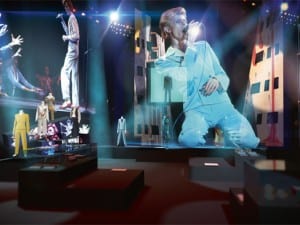GRAD: Gallery for Russian Arts and Design is a pioneering institution bringing new insights into Russian art, design and culture. This summer GRAD presents Work and Play Behind the Iron Curtain, an exhibition examining the changing face of Soviet design from the 1917 Revolutions to Perestroika.
Produced in collaboration with the Moscow Design Museum and ZIL, the show combines over 50 key objects featuring the quirky and often charming design style that emerged in the 1950s from the Soviet Union. The preceding period, noticeably bound by more severe, functional principles, is represented by models and photographs from the famous ZIL factory, which produced both armoured trucks and domestic appliances.
In existence under a different name since 1916, the ZIL factory was one of the most prestigious industrial enterprises in the country. Mainly devoted to the production of motor vehicles, it manufactured trucks and military vehicles alongside the exclusive limousines favoured by party officials. For the masses, the factory began producing the ZIL refrigerator in 1950, which became ubiquitous in Soviet homes, even if it often stood empty.
The factory expansion into domestic items was emblematic of the times: from the lates 1950s millions of standardised, apartment blocks with tiny rooms sprang up across the Soviet Union. Despite the Soviet advancements in the Space Race, matters closer to home had been slower to develop and poor living conditions and a lack of consumer goods were the reality for those living back on Earth. Visitors to the American National Exhibition, held in Moscow in 1959, were rumoured to jostle for the privilege of picking up used Pepsi cups. Determined not to be outdone by American capitalism, Khrushchev focused his emerging economic plan on offering every family a modern flat of its own.
The following period resulted in the development of many beloved staple items of the Eastern Bloc: from the Chaika vacuum cleaner and the Vyatka scooter to the Raketa wristwatch and the Nevalyashka roly-poly doll. Bringing together domestic appliances, food packaging, electronic devices, toys and sporting equipment, the display at GRAD reveals a lesser known side of Soviet society: consumerism and popular culture. Underground culture is hinted at through bootleg copies of vinyl records featuring banned Russian and Western music. Ingeniously made using illegally obtained medical X-ray sheets, they featured fragmented images of human skeletons and were circulated secretly up to the mid 1960s.
This exhibition provides a rare opportunity to examine everyday life, work and play in the Soviet Union: through the prism of its quirky, yet iconic designs, it reveals what life was really like behind the Iron Curtain.
Work and Play Behind the Iron Curtain, 19 June – 24 August, GRAD: Gallery for Russian Arts and Design, 3-4a Little Portland Street, London, W1W 7JB, www.grad-london.com.
Credit:
1. Nevalyashka Dolls, produced from 1958, courtesy GRAD and Moscow Design Museum
Follow us on Twitter @AestheticaMag for the latest news in contemporary art and culture.




